A Humble Disclaimer: This article is a lighthearted exploration of biscuit culture – part linguistic adventure, part culinary detective work. British friends, prepare for some American perspective; American readers, get ready to have your minds blown.
The innocent word "biscuit" hides a cultural divide so vast it can transform a friendly dinner into a good-natured debate on proper food terminology.
In my household, this became abundantly clear the first time I lovingly prepared biscuits and gravy for my British spouse – a moment that would go down in our cross-cultural dining history.
Picture the scene: I'm proudly presenting what I consider a quintessential American comfort food and one of my favorite dishes. My British partner takes one look and declares these are definitely not biscuits, and that's certainly not gravy. "These," she announced with the precision of a Great British Bake Off judge, "are savoury scones with sausage white sauce."
It was our first real encounter with how deep these linguistic differences went – what was comfort food for one was a fundamental food classification error for the other.
It's worth noting that "gravy" in the US encompasses many varieties that would be classified as “sauce” in the UK. And "scones" differ significantly between our countries too. Both topics deserve their own articles.
The Great Biscuit Divide
In America, a "biscuit" refers to what is sometimes called a Southern biscuit or baking powder biscuit - a soft, flaky, buttery bread that is perfect for breakfast. It's a vehicle for gravy, jam, honey or simply enjoyed hot out of the oven with butter.
In the UK, however, the word "biscuit" means something entirely different and is what most Americans would call a "cookie." Specifically, a British biscuit is a sweet, crisp, flat, baked treat designed to be enjoyed with tea or as a snack.
Here's the key difference between a British biscuit and a cookie: British biscuits must snap.
This isn't just a preference; it's practically a scientific requirement.
A proper British biscuit also needs to withstand the most rigorous of dunking rituals – plunged into a hot cup of tea and emerging intact, ready to be consumed. It's an engineering challenge disguised as a snack.
Cookies vs. Biscuits: A Scientific Approach
The fundamental difference? Snap and purpose.
American cookies (sweet, often chewy or soft baked treats) are usually thicker, chunkier, and filled with chocolate chips, nuts, or other mix-ins. Cookies are also often dunked in milk.
British biscuits are engineered for tea-based structural integrity. It's as much about taste as it is about performance.
The American Cookie: A Distant Cousin
Unlike the British biscuit, the American cookie lacks the same unified cultural ritual, though it certainly has its own cultural significance. Where British biscuits are carefully selected, strategically offered, and meticulously dunked, American cookies have their own distinct traditions.
America has developed its own cookie culture, from the nationwide phenomenon of Girl Scout cookie season (where Americans stock up on Thin Mints and Peanut Butter Patties with surprising intensity) to holiday cookie exchanges, where homemade varieties are swapped and treasured. The chocolate chip cookie itself has achieved iconic status, with regional debates about whether they should be crisp or chewy that rival British biscuit discussions in passion if not formality.
The closest American equivalent to the British biscuit ritual might be a nostalgic shortbread or a crisp graham cracker, but these lack the precise social choreography of a British biscuit. In the US, cookies are more democratic experiences – something you might grab on the go, dunk in milk (not tea), or enjoy as a quick sweet treat.
Some might argue that Oreos come close to having a cultural significance, with their own rituals of twisting, licking, or dunking. But even Oreos fall short of the biscuit's social importance in British culture. In Britain, offering the wrong biscuit could be a social faux pas. In America? It's just another cookie preference.
The Art of the Dunk: A British Institution
Perhaps nothing defines British biscuit culture more than the art of dunking. This is not merely a casual way to enjoy a snack – it's a practiced skill passed down through generations.
The perfect dunk requires precision timing: too brief, and the biscuit remains dry and misses the flavor-enhancing qualities of tea absorption; too long, and catastrophe strikes as your biscuit disintegrates into your cup, creating what Brits dramatically refer to as "tea spoilage" – a tragedy of the highest order.
Different biscuits have different optimal dunking times, a fact that serious biscuit enthusiasts can discuss with the gravity of wine connoisseurs debating vintages. A digestive might withstand a three-second plunge, while a more delicate variety might require a quick in-and-out approach.
Watch British Comedian Peter Kay on Biscuit Dunking
My partner shared this with me when I first came to the UK to help me get my head around some of the different biscuits. Here's British Comedian Peter Kay discussing dipping your biscuits.
The Great British Biscuit Hierarchy
If you thought tea had passionate defenders, wait until you dive into the world of British biscuits. In the UK, biscuits aren't just snacks – they're subjects of debate, nostalgia, and cultural identity.
My British partner can spend more time discussing the merits of a Chocolate Digestive than some people spend choosing a life partner. The debates are nuanced – crumbliness, sweetness, structural integrity when dunked, ability to maintain flavor profile while absorbing tea. It's serious business.
There's no official "Michelin Guide" of biscuits, but British culture has developed an intricate, largely unspoken social ranking that's part humor, part genuine taste evaluation. Digestives, Hobnobs, Custard Creams – these aren't just biscuits, they're cultural institutions. Each has its defenders, its specific dunking characteristics, and its place in the social snacking ecosystem.
Brace yourself: this biscuit hierarchy is more of a starting point for discussion than a hard and fast rule.
After asking my British colleagues at work to help me rank some of the more popular British biscuits, here's the general pecking order they helped create (though asking any group of Brits will spark a delightfully passionate debate):
Top Tier: The Aristocrats (Reserved for special guests and celebrations)
Hobnobs (especially chocolate-covered)
Chocolate Digestives (milk/caramel or dark chocolate varieties)
Shortbread
Viennese Fingers
Fox’s Crunch Creams
Any biscuit covered in foil is apparently considered posh, eg Viscount biscuits
Middle Class of Biscuits (Everyday guests and weekend visitors)
Bourbons
Ginger Nut (aka Ginger Snaps)
Nice biscuits
Plain Digestives
Working Class Heroes (Family favorites for daily tea breaks)
Custard Creams (the underdog with surprising popularity)
Plain Rich Tea
Malted Milk
Jammie Dodgers
Party Rings (mostly for kids’ parties)
The Budget/Basic Tier (Emergency reserves and solo dunking sessions)
Supermarket own-brand digestives (However, many seem to prefer supermarket own-brand biscuits in general)
Broken biscuits assortment
Packed Lunch Biscuits (The school playground currency)
These are the subject of heated debate in British snack taxonomy: Are they biscuits? Chocolate bars? Or a unique hybrid category of "chocolate biscuit bars"? Officially classified as biscuits by manufacturers but with enough chocolate to create identity confusion, these individually wrapped treats occupy a delicious middle ground that defies easy categorization:
Rocky (Red and Yellow varieties)
Wagon Wheels ("a maverick of the biscuit world" with marshmallow centers)
Breakaway
Gold Bar
Club (Orange and Mint varieties)
Blue Riband (a "chocolate biscuit" with crisp wafer covered in milk chocolate)
Trio
Penguin (milk chocolate bars filled with biscuit and chocolate cream)
Custard Creams occupy an interesting space in the hierarchy. While technically in the "Working Class Heroes" category, they have a special status as a beloved classic. They're the underdog of the biscuit world – not trying to be fancy, just consistently delicious and many people rank them higher. Their simple vanilla cream filling and distinctive embossed pattern give them a nostalgic appeal that many secretly adore, even while publicly preferring more sophisticated varieties.
Interestingly, this hierarchy isn't just about taste. It's about:
Dunking capability
Structural integrity
Social perception
Nostalgia
Brand recognition
The beauty of the British biscuit is that there's room for debate, passion, and personal love – even for the most humble offerings. This isn't a rulebook, but a conversation starter. Every family, every region, every individual brings their own delicious perspective to the great biscuit debate.
Whilst not technically a biscuit, the Tunnock’s Caramel wafer is one that often comes up within biscuit conversation/debate. The same goes for a Jaffa Cake.
The Great Biscuit-Cake Debate: The Jaffa Cake Legal Battle
No discussion of British biscuit culture would be complete without mentioning the famous Jaffa Cake controversy - perhaps the most high-stakes biscuit dispute in history.
In 1991, the humble Jaffa Cake found itself at the center of a landmark tax case. HM Customs and Excise had ruled that Jaffa Cakes were chocolate-covered biscuits, which would subject them to value-added tax (VAT). McVitie's, however, insisted they were cakes, which are zero-rated for tax purposes as they're considered essential foods. The stakes were enormous - potentially costing McVitie's millions of pounds.
In a dramatic courtroom showdown, McVitie's brought evidence including a giant Jaffa Cake to demonstrate it was indeed cake-like in nature. Their key argument? Unlike biscuits which go soft when stale, Jaffa Cakes harden - just like cakes do.
After careful deliberation, the court ruled in McVitie's favor. Jaffa Cakes were legally declared cakes, despite being found in the biscuit aisle, packaged like biscuits, and consumed like biscuits by most people.
This peculiar legal victory reinforces a strange truth about British biscuit culture - the lines between biscuit and cake can be remarkably fluid, and sometimes, only a tax tribunal can determine which is which!
The Unwritten Rules of Biscuit Hospitality
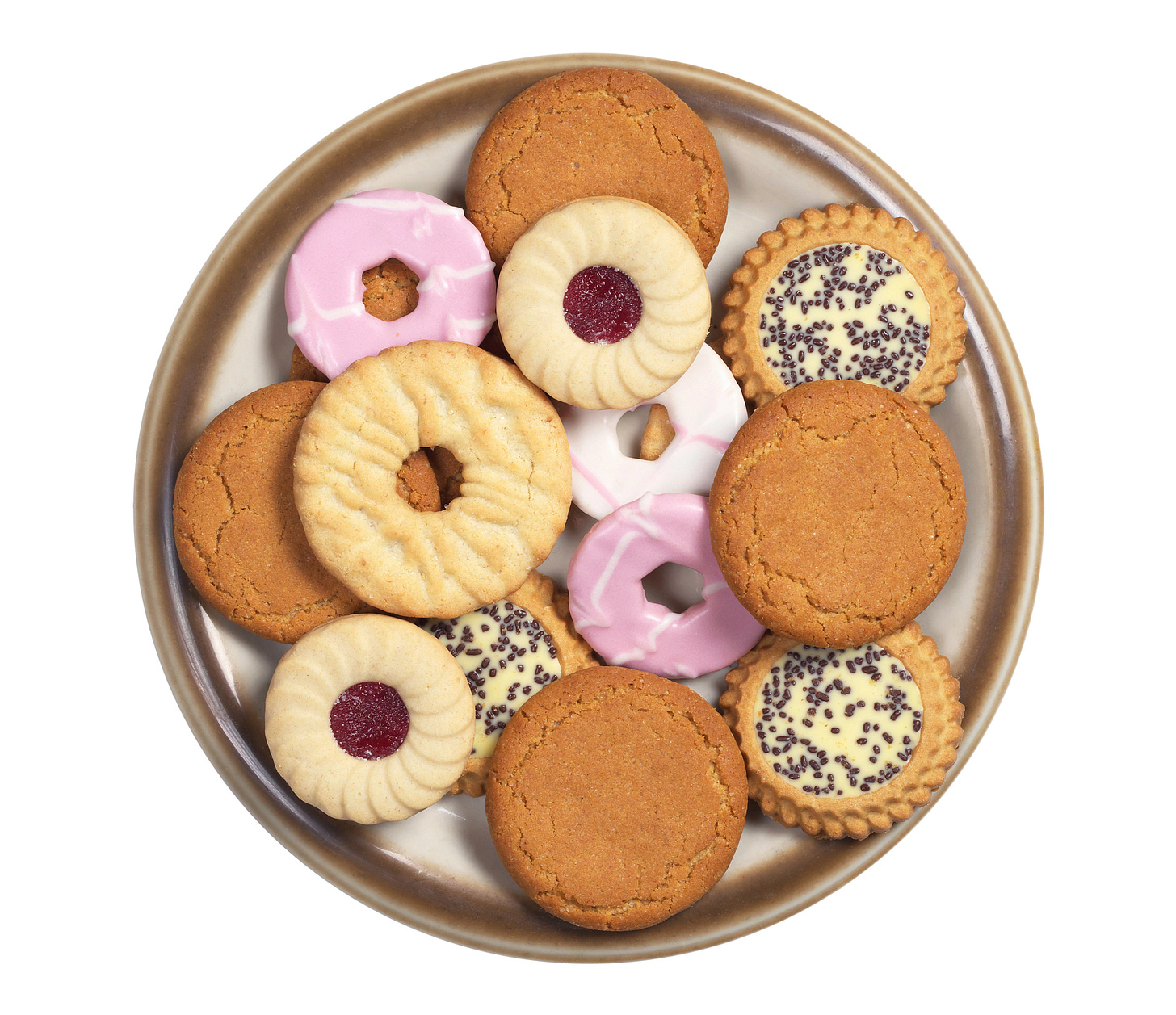
Now that you understand the biscuit hierarchy, you need to know how it's applied in social settings. If tea is the lifeblood of British social interaction, biscuits are its beating heart. Offering biscuits isn't just a gesture – it's a delicate social choreography that would make a diplomatic etiquette coach proud.
First rule of Biscuit Club: Always be prepared.
A proper British home maintains a "biscuit emergency stash" for unexpected social situations.
Unexpected visitors? Kettle on, biscuits out.
Formal meeting? Biscuits are essential accompaniments.
Casual catch-up? You'd better believe there will be biscuits.
The absence of biscuits during tea isn't merely an oversight – it's interpreted as either a dire personal circumstance or a deliberate social slight.
But here's the real art: It's not about having biscuits, it's about having the right biscuits for the right moment:
Digestives: Your diplomatic passport of the biscuit world
Hobnobs: A subtle signal that you've made an effort
Chocolate-covered varieties: Reserved for moments when you're aiming to impress
Fancy selection boxes/biscuits wrapped in foil: The ultimate hosting power move
Biscuit Placement: A Serious Business
The level of formality dictates presentation:
With close friends: A shared packet is acceptable (offer the open end first)
For formal visitors or "company": The packet is banished - only a proper plate will do
The offering ritual:
Present with a casual but unmistakable, "Would you like a biscuit?"
Always take the least attractive biscuit yourself – true hospitality is selfless
The Sacred Biscuit Tin
No exploration of British biscuit culture would be complete without mentioning the hallowed biscuit tin - a kitchen staple that's as much a part of British homes as the kettle itself. Dating back to the 1830s when Huntley & Palmers first began producing decorative tins to store biscuits without breaking them and keep them fresh during transport, these containers quickly became cultural icons.
Unlike the American cookie jar, the British biscuit tin often serves multiple purposes:
Practical storage to maintain proper biscuit crispness
Decorative kitchen element, often featuring seasonal or commemorative designs
Family heirloom passed down through generations
Repository for sewing supplies long after the last biscuit has been eaten
True biscuit aficionados know the special joy of reaching the bottom of the tin where the "num nums" reside - those delicious crumbs and broken pieces that somehow taste even better than the intact biscuits themselves. Children across Britain have fond memories of being allowed to tip the tin and claim these treasured remnants.
Biscuit by the Numbers: A Delicious Deep Dive
Think the biscuit world is just a casual snack situation? Think again. The UK takes its biscuits seriously – like, statistical-analysis seriously. Consider these jaw-dropping biscuit facts:
British people consume a staggering 141 million biscuits EVERY. SINGLE. DAY.
The average Brit munches through about 23 biscuits per month
There are over 200 distinct commercial biscuit varieties in the UK
The biscuit market is worth a mind-blowing £1.5 billion annually
To put this into perspective, the British biscuit aisle is so extensive it's often comparable to the entire snack section in an American grocery store. Some supermarkets even dedicate entire shelves just to different types of digestive biscuits. McVitie's Digestive alone sells over 80 million biscuits per year – a number that would make any American cookie manufacturer weep with envy.
Beyond Tea Time: The Versatility of Digestives
While Americans reach for graham crackers when making a cheesecake base, British bakers automatically turn to digestive biscuits for this essential task. In the UK, digestives are the traditional choice for cheesecake bases, creating that perfect buttery, crumbly foundation that contrasts beautifully with the creamy topping.
The digestive biscuits’ unique attributes make it particularly well-suited for dessert bases:
Its wheat flour composition gives it structure without excessive sweetness
The subtle malty flavor complements rather than competes with the cheesecake
When crushed and mixed with butter, it forms a perfect compact base that holds together
This baking application takes the humble digestive far beyond its teatime roots, elevating it to an essential ingredient in British kitchens. The closest American alternative is the graham cracker, which shares a similar "semi-sweet, with a slight malty flavor" profile, though many British expatriates in America will still seek out proper digestives for an authentic cheesecake experience.
The Christmas Elevation: When Biscuits Become Gifts
At Christmas, ordinary British biscuits transform into coveted gifts through elaborate packaging and festive presentation.
Two brands particularly excel in this seasonal elevation: Marks & Spencer turns shortbread and ginger biscuits into memorable experiences with their magical rotating musical tins that play festive tunes and project light patterns. These decorative containers often become cherished keepsakes long after the biscuits disappear.
Meanwhile, Fox's "Fabulously" selection boxes offer accessible luxury with assortments of chocolate-covered biscuits presented in elaborate packaging that signals special-occasion status.
This Christmas transformation highlights how presentation can elevate everyday treats into appropriate gifts - while plain digestives might seem strangely informal as presents, a decorative tin instantly becomes suitable for everyone from neighbors to work colleagues.
A Tale of Two Biscuits
Whether you're dunking a Digestive or slathering gravy on a baking powder biscuit, these humble baked goods carry the weight of tradition, nostalgia, and identity. Understanding each other's biscuit culture just might be the key to international harmony - or at least a more delicious cultural exchange.
The next time you find yourself in a conversation about biscuits with friends from across the pond, perhaps the safest approach is to clarify which type you're discussing before sharing your strong opinions.
After all, there's nothing that can't be resolved over a proper cup of tea and a shared laugh about our "separated by a common language" moments.
Your Turn: Biscuit Stories Welcome
As always, this is just the beginning into the British biscuit culture. For those who enjoyed our previous deep dive into British tea culture (spoiler: if you haven't read it, go check out "Putting the Kettle On" article), this biscuit exploration is the perfect companion piece.
British friends, I welcome your gentle corrections and additional insights.
To my fellow Americans, may this be the beginning of your journey into understanding the complex world of British food traditions.
I want to hear from you! Drop a comment and share:
What's your absolute favorite biscuit (British or American)?
What's the ONE biscuit you can't stand?
Have you experienced any fun cross-cultural biscuit or cookie mix-ups?
Americans: What was your first encounter with a British biscuit?
Brits: What's the most confusing American cookie you've ever encountered?
Bonus points for the most cringe-worthy dunking disaster or most passionate defense of your favorite biscuit variety!
See you next Sunday,
Marianne

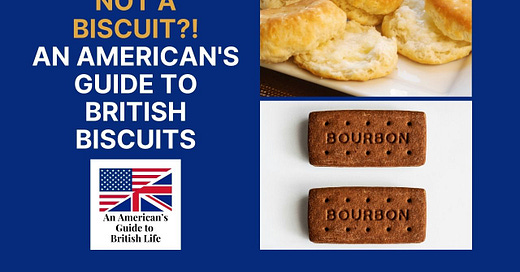



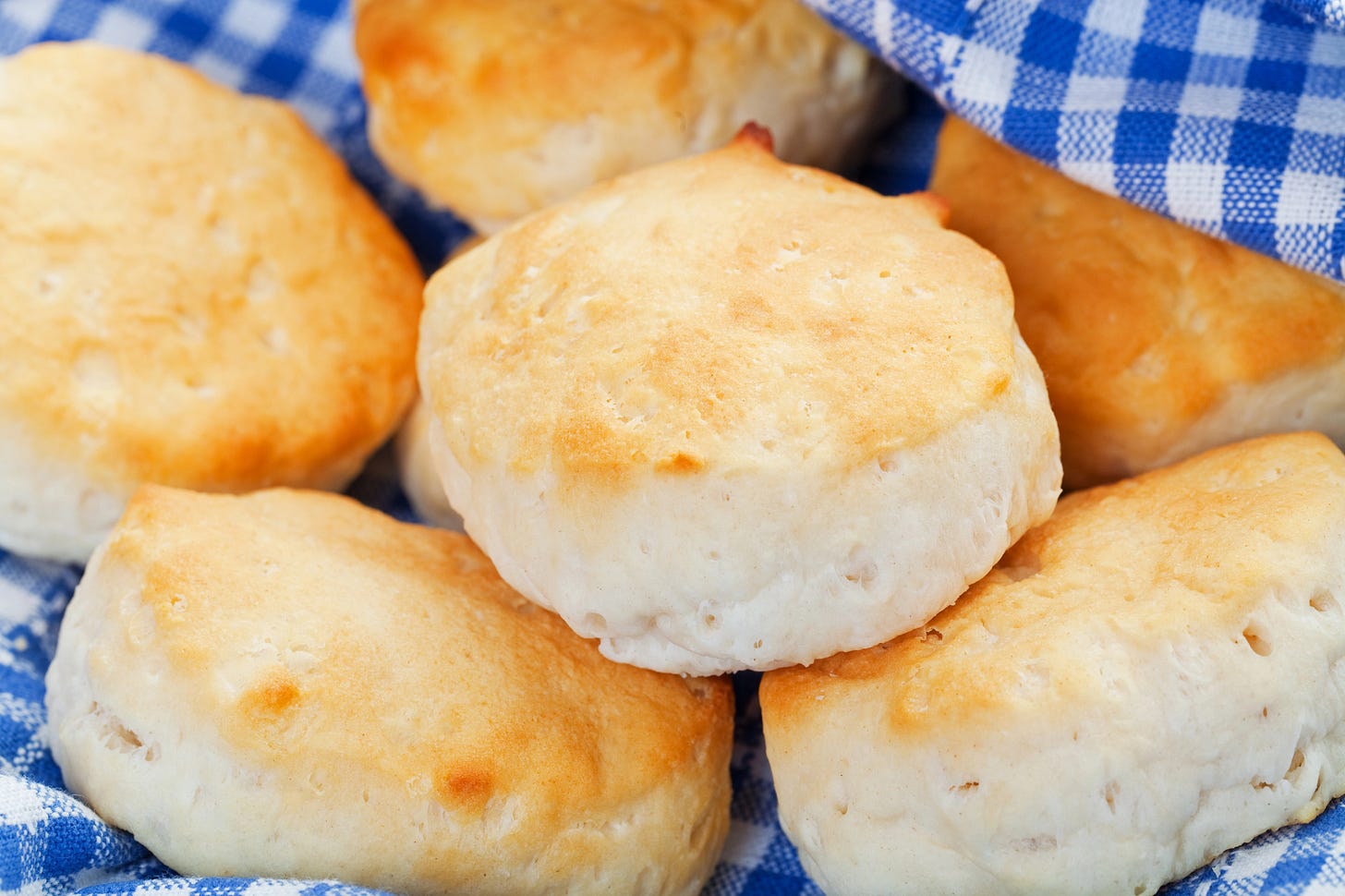
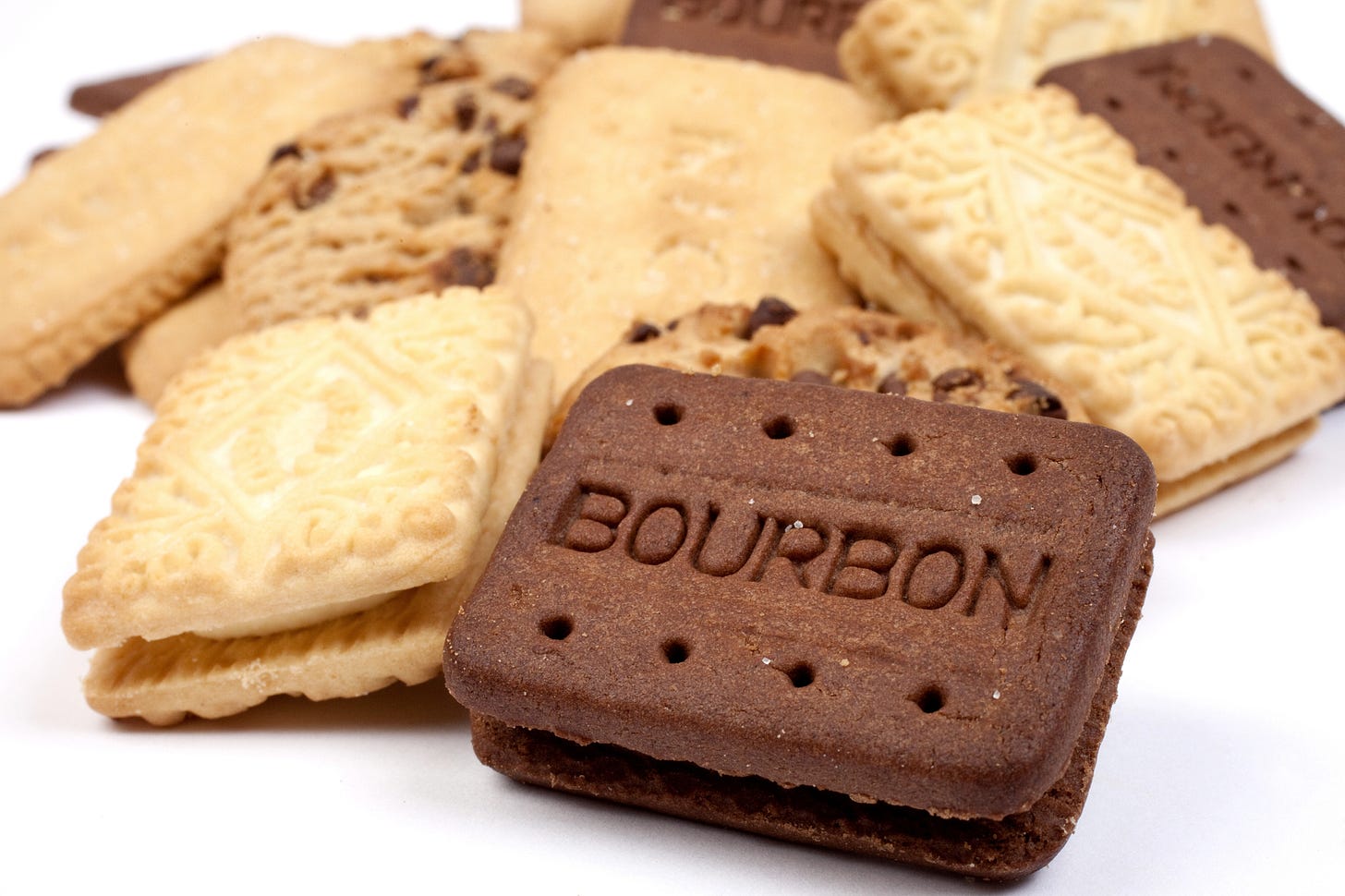
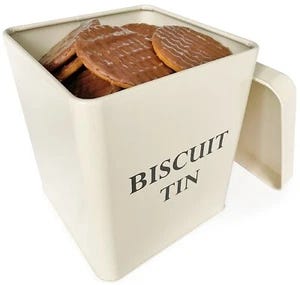
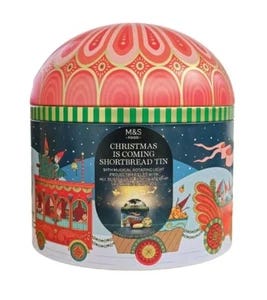

You claim this to be a light-hearted review of the subject, but it is probably the most complete account I’ve ever seen. Well done!
On a less positive note, it should be recorded that despite its central role in British society the biscuit has become a victim of that most pernicious marketing tool, shrinkflation. While the Wagon Wheel has most notoriously lost 50 per cent of its diameter over the years, even icons such as the Bourbon and the Custard Cream are mere shadows of their former selves. And the days are gone when a digestive was too wide to dunk in a mug of tea unbroken.
Wow! A dissertation on a culinary and critically, a cultural divide. Well done. You have earned your B.Sc. In Compatible and incompatible v tensile strength of baked goods plus a B.A. in Physical & Cultural Diversity within Former Colonies and Their Founding Hierarchies..